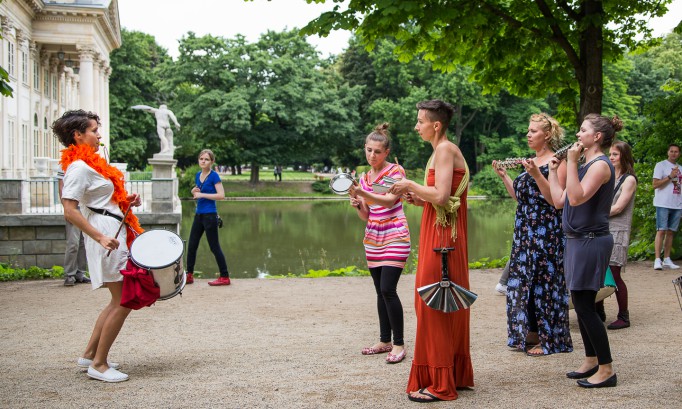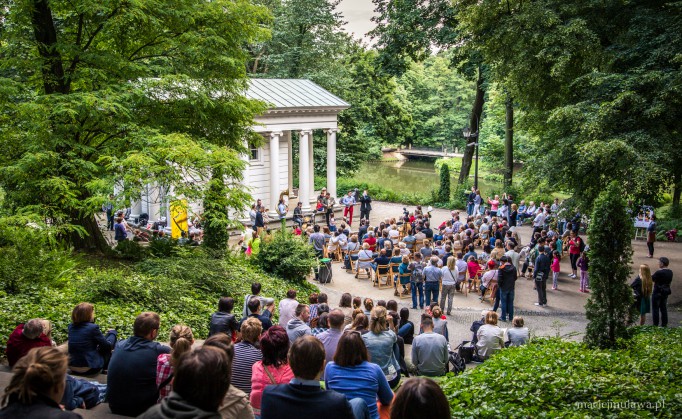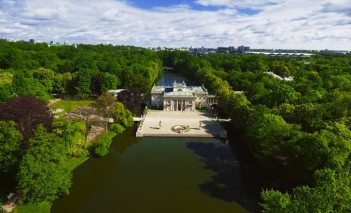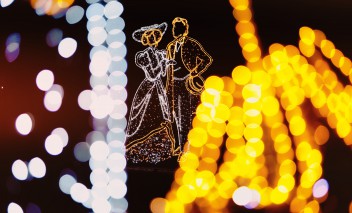Perception of the Royal Łazienki in a survey carried out by sociologists

The modernization of the Museum buildings and conservation of monuments as well as the enhancement of the cultural offer are changes which appealed the most to visitors of the Royal Łazienki – these are the findings of a survey conducted by sociologists in July in connection with the Sphere of Silence Festival. Most respondents pointed out at relaxation and walking as the main reasons for a visit to Łazienki.
The aim of the survey, which was carried out in July of this year by sociologists from Communication Service, was to find out about the opinions on the image of this year’s Sphere of Silence Festival. The sample of the survey consisted of 465 people who visited the Royal Łazienki during the six weekends from 21 June to 26 July 2015. The questionnaire of the survey, which was addressed to numerous visitors of the Festival, contained 16 questions.
Answering the first question in the survey on the main reasons for visiting the Royal Łazienki, most respondents, i.e. 54%, mentioned relaxation and walking. 17% of respondents visited Łazienki because of cultural events, e.g. a concert. For 16% of them a visit to the Royal Łazienki was connected with the proximity of residence, attractions for children, a desire for spending time in the bosom of nature. 9% of the respondents visited the royal residence to see the monuments or museum exhibitions, while 4% came to Łazienki by accident.

Answering the question ‘How often do you visit the Royal Łazienki Museum?’, most of respondents, i.e. 43%, said that they did it at least once a month, 39% once a year, while 13% once every few years. Only 5% of respondents admitted that they had never visited Łazienki before.
In addition, researchers wanted to find out whether visitors have noticed changes in the Royal Łazienki over the last few years. 64% of respondents answered ‘yes’ to this question. The most appreciated undertakings included: the modernization of the Museum buildings and conservation of monuments (81 answers), enhancement of the cultural and entertainment offer (46 answers), a more beautiful landscape architecture (46 answers), high level of maintenance and cleanliness in the park (30 answers), and also the possibility of using the grass lawns (16 answers).
During this year’s Sphere of Silence Festival 45% of respondents visited the Royal Łazienki specially to listen to music, while 53% of them visited the gardens and the monuments for another reason. The survey showed also that 19% of respondents learnt about the Festival from the Internet, 21% from friends or family, while 29% were not able to indicate the source of information. 19% of respondents indicated that they learnt about the Festival from such sources as city advertising – 1%, television – 1%, radio – 2%, volunteers 2%, press – 3%, leaflets – 3%, posters in the Łazienki – 7%. Only 4% of respondents attended the Festival because they remembered its previous year’s edition. 8% came to Łazienki by accident.
‘What made you come to the Festival?’ – another question asked by the surveyors. 33% answered that it was a coincidence, 24% said it was interest for music, and 19% indicated it was the place where the Festival was organised. Positive opinions of friends were mentioned by 8% of respondents, a high artistic level of performing artists by 5% and the brand of the Sphere of Silence Festival by 3%. The remaining respondents, i.e. 9%, mentioned, among other things, attractions for children, curiosity, nice weather.
As many as 84% of respondents stated that they enjoyed the concerts, 13% answered that it was difficult to say if they enjoyed the concerts, while 2% didn’t enjoy them. Similarly, i.e. as many as 91% of respondents stated that the locations of the Festival, i.e. stages situated in different spots of the garden in the Royal Łazienki, were good. 8% didn’t have any opinion on the matter, and only 1% considered that it was a bad idea. The majority of respondents agreed that they liked the mood and atmosphere during the concerts (89%) and the fact that concerts were performed unplugged (90%).





